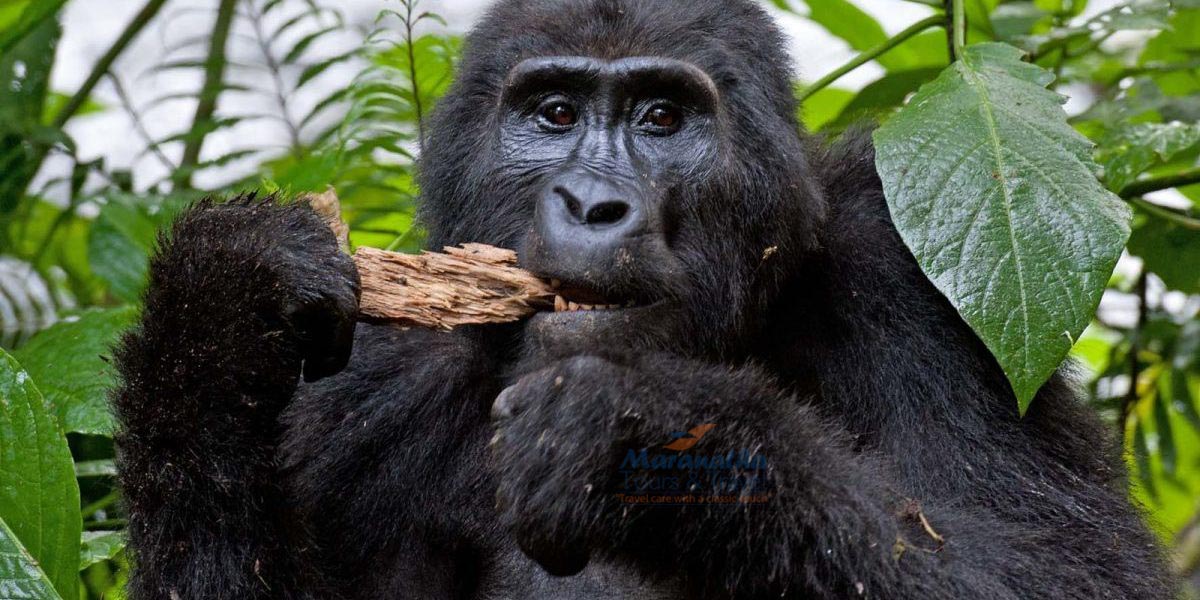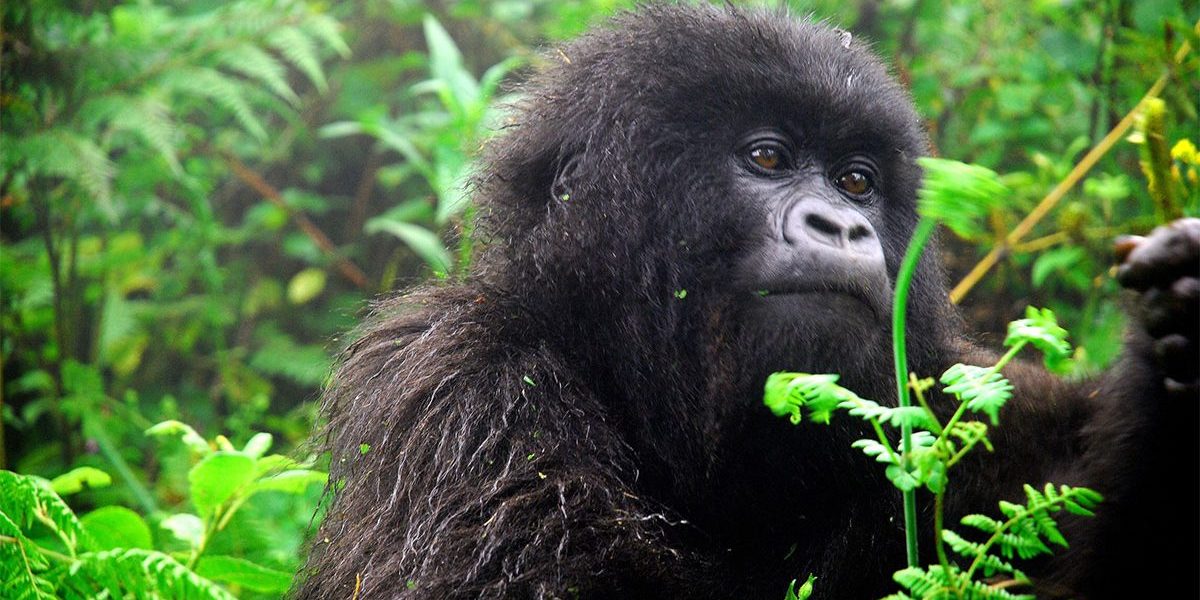The Number of Baby Gorillas in Uganda Increases
Do you know the immeasurable joy that comes when a baby is born in a family after a long time of waiting? This feeling is not different with the birth of mountain gorillas because that means an improvement in Uganda’s gorilla trekking safaris. These exceptional giant Apes have a low reproduction rate and when a baby gorilla is born, it calls for a celebration. Mubare family within Buhoma sector of Bwindi Impenetrable National Park welcomed two wonderful and healthy babies in one week.

Gorilla Trekking
According to Dr. Andrew Seguya the Executive Director of the Uganda Wildlife Authority (UWA), the birth of two mountain gorillas in a single week is a double blessing and joy for Uganda’s gorilla tourism since tourists will have more to see and enjoy during safaris in the country. It is very extraordinary to have two babies born in one week and interestingly from the same family. Mountain gorillas are sub-species of the Eastern gorillas and are critically endangered species of wildlife on earth.
On the 23rd June 2017, one of the Adult females in Mubare family (named Karungi) gave birth to one of the celebrated baby gorillas then 5 days later (on the 28th June 2017), Kisho gave birth to a healthy baby. This brings the number of members in this family to 14 mountain gorillas. The children were sired by Kanyonyi, the dominant silverback of Mubare family. Kanyonyi became the leader of the group from his father-Ruhondeza who couldn’t protect the group due to old age hence losing most of the family members during fights with unhabituated male gorillas or other gorilla families. Silverback Ruhondeza later passed away on the 27th June 2012 and was laid to rest next to Buhoma Park Headquarters. Ever since silverback Kanyonyi took over leadership of the pioneer gorilla group in Bwindi and Uganda in general, it has been growing and increasing in size. More mountain gorilla births mean increase in visitor numbers hence rise in Uganda’s tourism revenues.
The places where Uganda’s Mountain gorillas are inhabited (Bwindi Impenetrable and Mgahinga National Parks) have welcomed more than 10 baby gorillas yet recorded fewer death cases since January. All this has been attributed to the Conservation efforts by the Uganda Wildlife Authority, the local communities and the Conservation Partners which makes these exceptional primates to produce freely without interference. At the time of monitoring, the babies were healthy, relaxed, safe and feeding well.
It should be noted that there are only 880 mountain gorillas left, and 480 of them are sheltered within the enormous Virunga Massif (shared by Mgahinga National Park of Uganda, Virunga National Park of the Democratic Republic of Congo and the Volcanoes National Park of Rwanda) while the rest call Bwindi Impenetrable National Park home. This means that Uganda alone contributes to half the World population of Mountain gorillas. There are now over 12 and 10 habituated gorilla groups for tourism in Uganda and Rwanda respectively

Gorilla trekking
Since 2014, Uganda’s tourism industry has been the leading foreign exchange earner ahead of foreign payments and coffee exports. Interestingly, Mountain gorillas contribute to almost $10 or over Shs 34 billion to Uganda’s tourism returns. However, these returns come in with limited investment in the tourism sector hence with more and bigger investment in the industry, the returns are expected to increase tremendously. On the positive note, there are plans to start gorilla naming ceremonies just like it is done in Rwanda to celebrate every birth as well as sensitizing locals and tourists on the significance of gorilla tourism. You can therefore make a trip to the Buhoma sector of Bwindi Impenetrable National Park and have a glimpse at the beautiful baby gorillas that are now only two months old.
In conclusion, with the increase in the number of mountain gorillas, there is hope that the number of tourists visiting Uganda for gorilla trekking will increase which in turn will improve on the revenues earned from the tourism sector.
